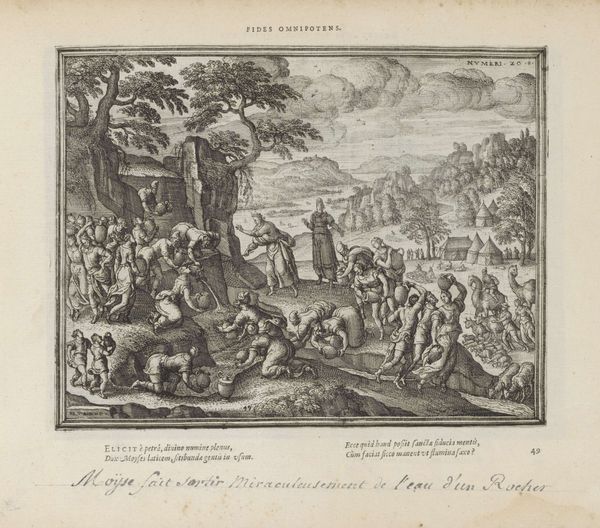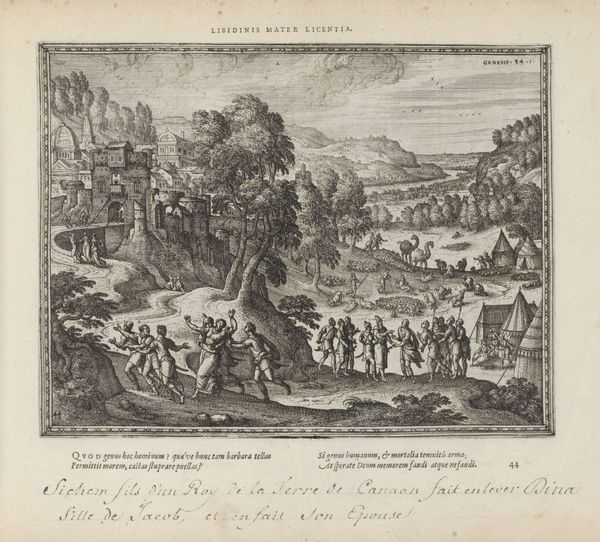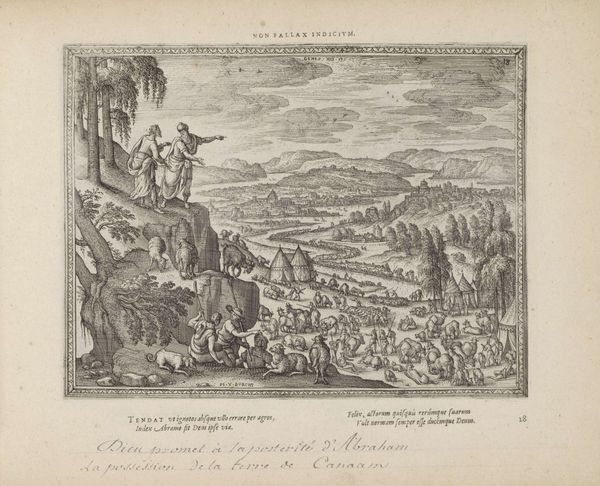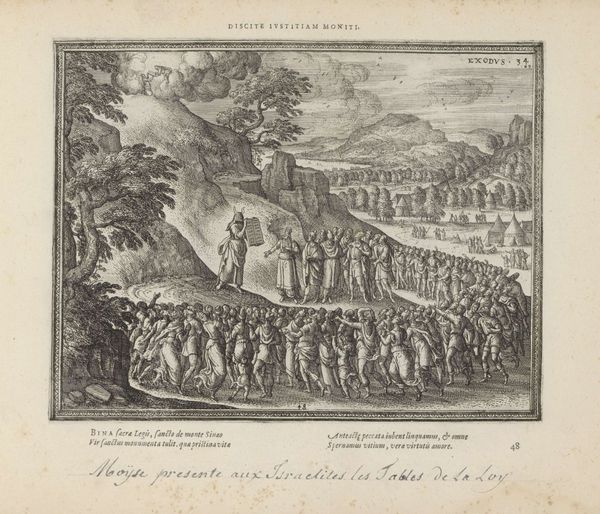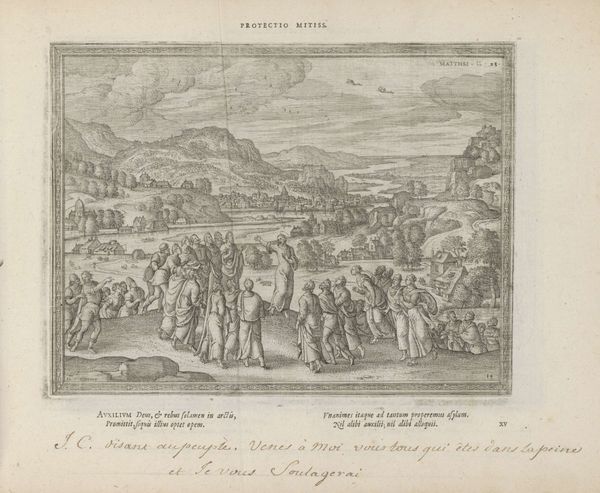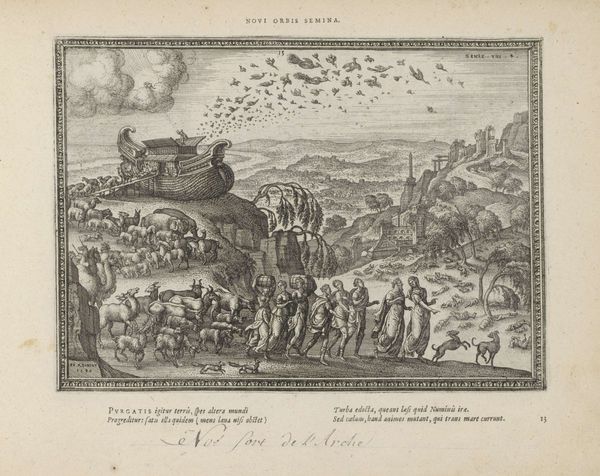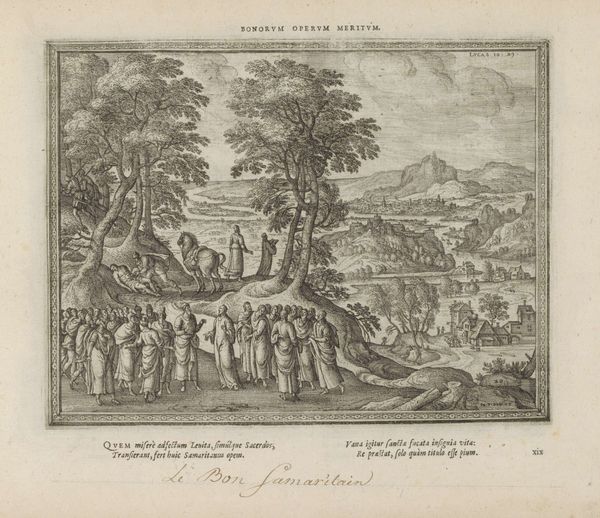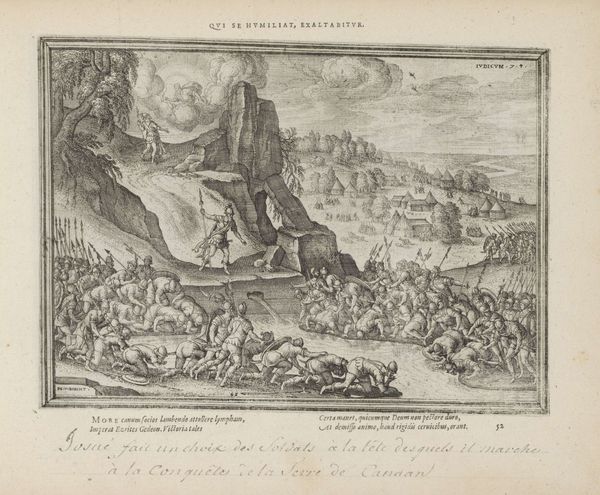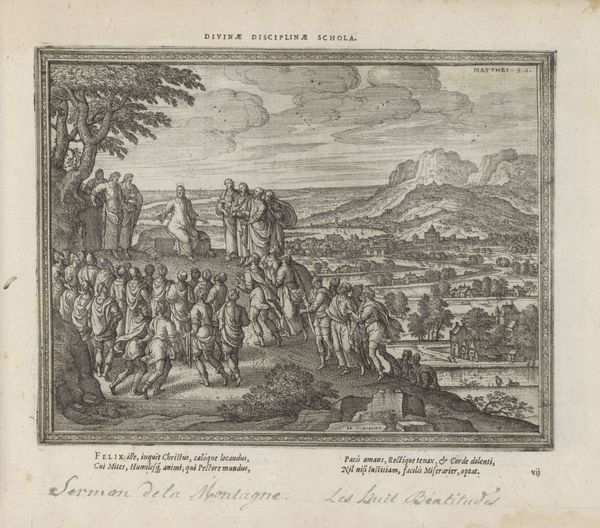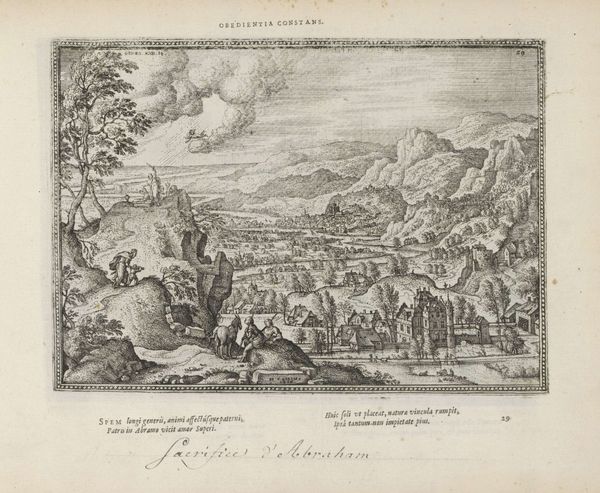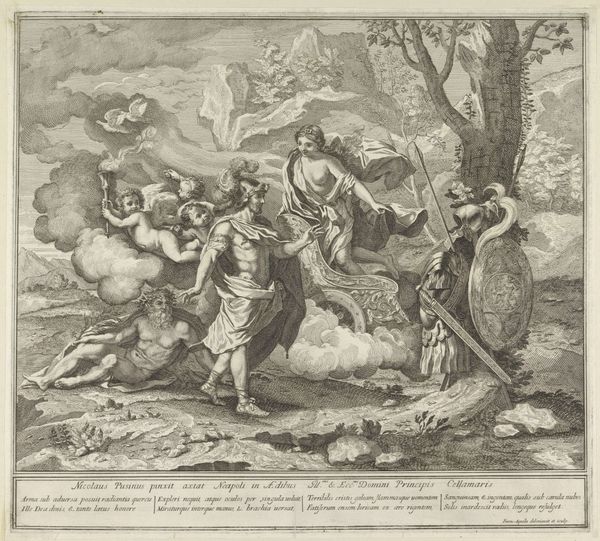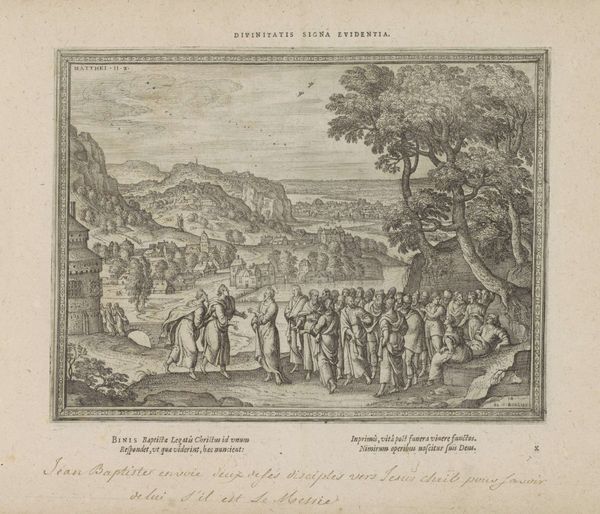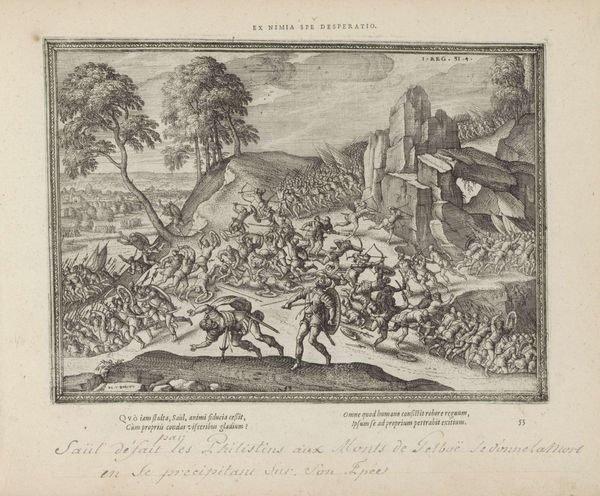
print, engraving
#
narrative-art
# print
#
figuration
#
history-painting
#
northern-renaissance
#
engraving
Dimensions: height 188 mm, width 250 mm
Copyright: Rijks Museum: Open Domain
Curator: This engraving by Pieter van der Borcht, made sometime between 1582 and 1613, is titled "Moses Destroys the Golden Calf." It depicts a powerful moment from the Old Testament. Editor: It's a frenetic scene! The eye is immediately drawn to the chaotic energy of the bonfire and the sheer volume of people depicted. You can almost smell the melting gold. Curator: Precisely. The piece highlights the story of Moses's return from Mount Sinai, where he finds the Israelites worshipping an idol made of gold. It's a narrative laden with themes of idolatry, obedience, and the consequences of societal rebellion. Editor: Thinking about production, creating this level of detail via engraving—the textures, the masses of bodies—demands meticulous labor. Each line is a physical act, a commitment to portraying not just the event but the emotional and moral weight behind it. How fascinating to consider this act of artistic devotion reflecting on the dangers of misguided worship. Curator: Exactly! The artist is making choices about the very nature of belief, using the language available to them at the time. How the golden calf represents not simply a false deity, but a misdirection of social longing and tangible resources, pointing towards how dangerous societal power vacuums can be in influencing communities towards idol worship of different kinds. Editor: And how quickly these communities turn. There are hints of violence, loss, but most powerfully, there's a physical reckoning taking place through fire: materials turned from idol back into something useless. Curator: It leaves us considering the precarious balance between faith, leadership, and the material allure of the world. Editor: A small piece, but deeply impactful in how it frames labor and societal failings. Curator: A sobering glimpse into our historical understanding of collective behaviour and religious devotion.
Comments
No comments
Be the first to comment and join the conversation on the ultimate creative platform.
